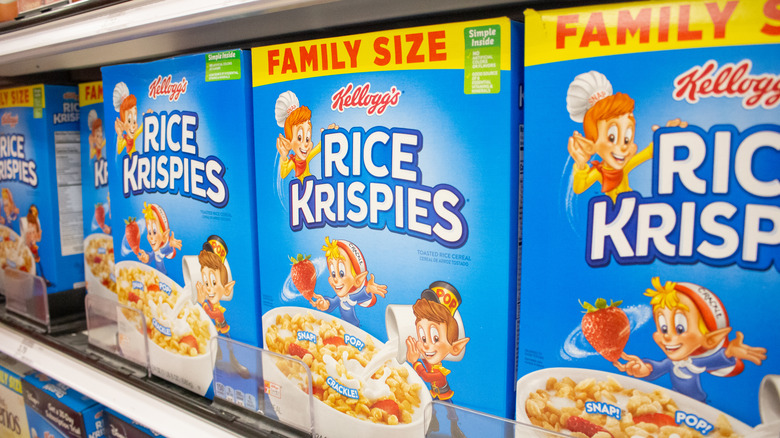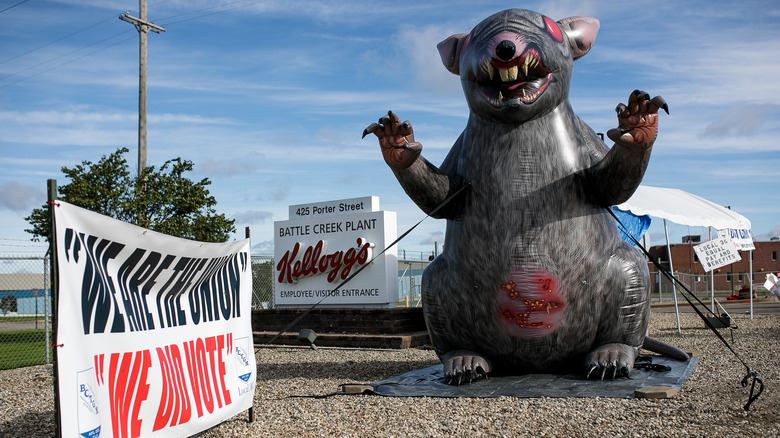Why You Might Not See Rice Krispies On Shelves For A While
Enjoying your first bowl of Rice Krispies may be a core memory for the majority of people alive today. The cereal has been on the shelves since 1928 and has mesmerized kids and adults alike with the signature "Snap, Crackle, Pop," you hear when you add milk to the crispy morsels. According to Statista, in 2020, 15 million Americans reported that in the past 7 days, they had consumed between one and four portions of Kellogg's Rice Krispies.
Since this cereal is so popular and nostalgic, the shortages that started in 2021 caused frustration from customers. "Yesterday I went to three grocery stores in search of @ricekrispies. Empty sh(elves). @KelloggsUS I really think someone needs to check on Snap, Crackle and Pop," @kristileskinen tweeted. Rice Krispies has been very busy on Twitter replying to customers like Kristi who are frustrated by the shortage. This particular tweet is from December of 2021, but Rice Krispies is responding with the same messaging in 2022, telling customers that they are experiencing "supply constraints in manufacturing" and are unsure when the cereal will be properly restocked.
Kellogg's production is still behind due to the 2021 worker strike and ingredient shortages
Those who were frustrated by the lack of Rice Krispies to make their holiday desserts in 2021 were once again disappointed when they returned to the store, recipe in hand, on Valentine's Day in 2022. This shortage can be attributed to Kellogg's inability to recover from their lapse in production from the 2021 worker strike and their continued struggles with ingredient shortages. According to Associated Press, in October of 2021, 1,400 workers at Kellogg's cereal plants in Nebraska, Michigan, Pennsylvania, and Tennessee went on strike, citing an "assortment of pay and benefit issues such as the loss of premium health care, holiday and vacation pay and reduced retirement benefits." The strike continued through December of 2021 until Kellogg's approved a new five-year contract that included "across-the-board wage increases and enhanced benefits for all" (via NPR).
In addition to the loss of 11 weeks of production, Kellogg's has also faced ingredient and supply shortages. According to Delish, rice production in the U.S. decreased by 16 percent between 2020 and 2021, causing a projected 15 percent price increase in the medium grain variety used to make the crunchy cereal. As Rice Krispies has expressed on Twitter, they are unsure when the shortage will end, but if you have a hankering for the cereal, you can check with your local store to see if it's in stock or use the "Where to Buy" tool on the cereal's website.

